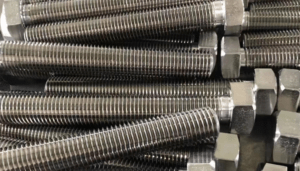Among various alloys, Inconel 625 vs Incoloy 825 stand out as two highly regarded materials in the aerospace, chemical processing, and energy generation industries due to their exceptional resistance to corrosion and high-temperature oxidation. While both alloys belong to the nickel-based superalloy family, they differ significantly in many aspects. In this article, we will take a closer look at the differences between Inconel 625 vs Incoloy 825.

Inconel 625 vs Incoloy 825 – What’s the Difference?
Inconel 625
Inconel 625, also known as UNS N06625 or Alloy 625, is a nickel–chromium–molybdenum alloy that falls within the class of austenitic superalloys. Its composition typically includes nickel (base metal), chromium (for corrosion resistance), molybdenum (for strength and creep resistance), and additional elements such as titanium, aluminum, and carbon to enhance specific properties.
The key features of Inconel 625 are its high strength, resistance to oxidation and corrosion at elevated temperatures, and good weldability. Its ability to retain mechanical properties even under extreme thermal cycling conditions makes it a popular choice for components exposed to high temperatures, such as combustion chambers, turbine blades, and exhaust systems in aerospace applications.
Inconel 625 also exhibits excellent resistance to various corrosive environments, including those containing sulfuric acid, hydrochloric acid, and saltwater. This makes it suitable for use in chemical processing equipment, pollution control systems, and other industrial applications where exposure to corrosive media is a concern.
Incoloy 825
Incoloy 825, or UNS N08825, is a nickel-iron-chromium alloy that belongs to the austenitic stainless steel family. It is characterized by a unique combination of corrosion resistance, strength, and ductility, making it a versatile material for a wide range of applications.
The alloy’s composition includes nickel as the base metal, with added chromium for corrosion resistance, iron for structural strength, and small amounts of molybdenum, copper, titanium, and aluminum for enhanced mechanical properties. Incoloy 825’s resistance to corrosion is particularly noteworthy in chloride-containing environments, where it performs better than many other alloys.
This material is widely used in chemical processing equipment, seawater desalination systems, and other environments where exposure to chloride-rich media poses a significant corrosion risk. Its good mechanical properties, weldability, and resistance to stress corrosion cracking also make it suitable for use in pipelines, heat exchangers, and other components exposed to harsh conditions.
Inconel 625 vs Incoloy 825 – Comparison
- Composition: While both alloys are based on nickel, Inconel 625 has a higher chromium and molybdenum content, making it more suitable for high-temperature applications. Incoloy 825, on the other hand, has a higher iron content and additional elements like copper and titanium, providing excellent corrosion resistance in chloride-rich environments.
- Properties: Inconel 625 excels in high-temperature strength and oxidation resistance, making it suitable for aerospace and power generation applications. Incoloy 825, on the other hand, is renowned for its corrosion resistance, particularly in chloride-containing media, making it a preferred choice for chemical processing and seawater applications.
- Applications: Inconel 625 is primarily used in high-temperature components such as turbine blades, combustion chambers, and exhaust systems. Incoloy 825, on the other hand, finds applications in chemical processing equipment, pipelines, heat exchangers, and other components exposed to corrosive environments.
- Cost: Generally speaking, Inconel 625 may be more expensive than Incoloy 825 due to its more specialized composition and use in high-performance applications. However, the cost can vary depending on market conditions and supply chain dynamics.
Why Choose Huaxiao Alloy?
In conclusion, while both Inconel 625 vs Incoloy 825 are highly regarded materials in their respective fields, they differ significantly in composition, properties, and applications. Inconel 625 is primarily used in high-temperature applications where strength and oxidation resistance are paramount, while Incoloy 825 shines in chloride-rich environments due to its superior corrosion resistance.
Thank you for reading our article and we hope it can help you to have a better understanding of the differences between Inconel 625 vs Incoloy 825. If you are looking for Inconel 625 & Incoloy 825 suppliers online now, we would advise you to contact Huaxiao Alloy.
As a leading supplier of high-temperature alloys from Shanghai China, Huaxiao Alloy provides customers with high-temperature alloys like Inconel 625 & Incoloy 825, Inconel 602CA Alloy, Inconel 713LC alloy, Inconel Alloy 750, Inconel Alloy 718, Inconel 602 alloy, Inconel Alloy 600, Inconel Alloy 601, and Incoloy Alloy 925 (UNS N08925) at a very competitive price.



